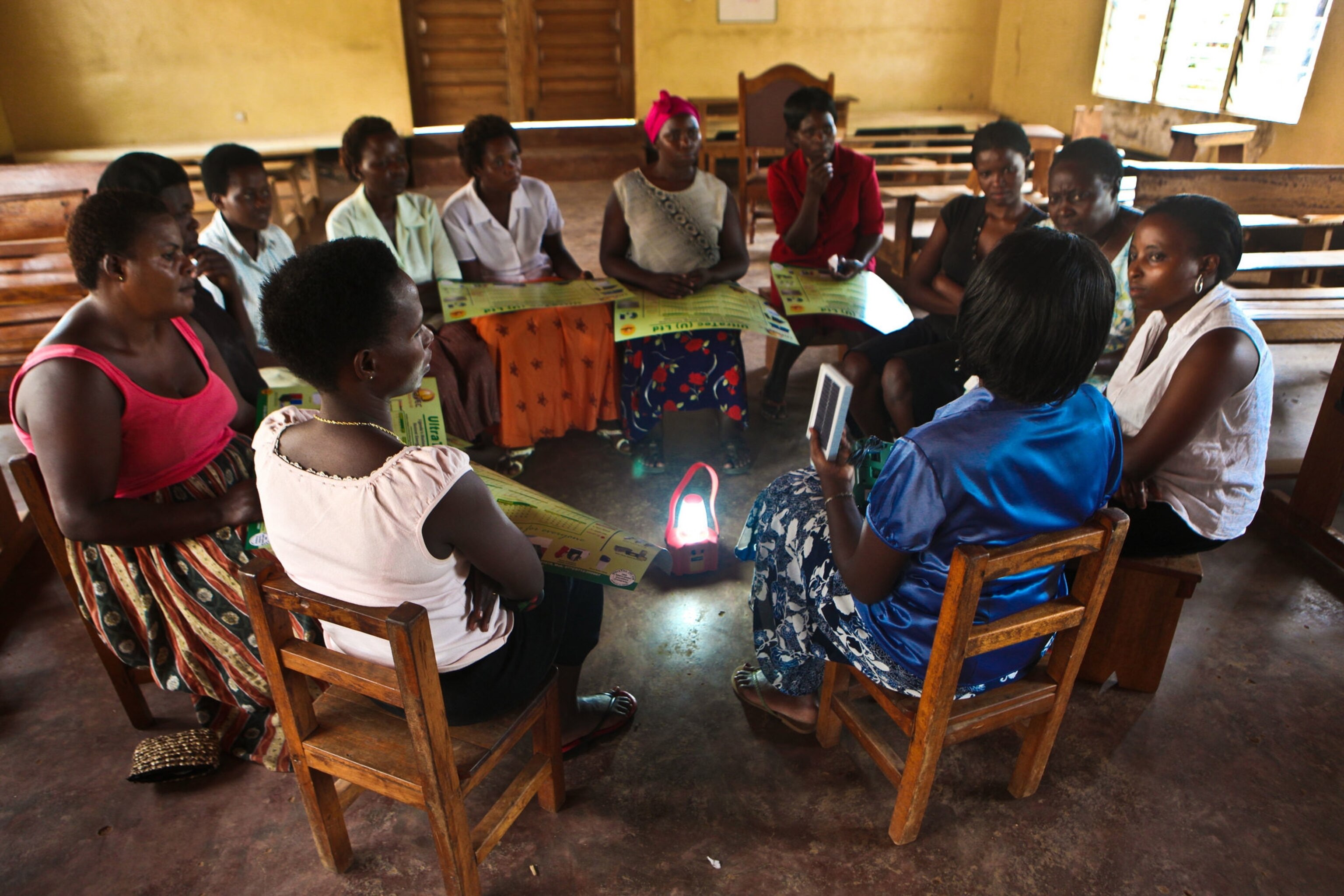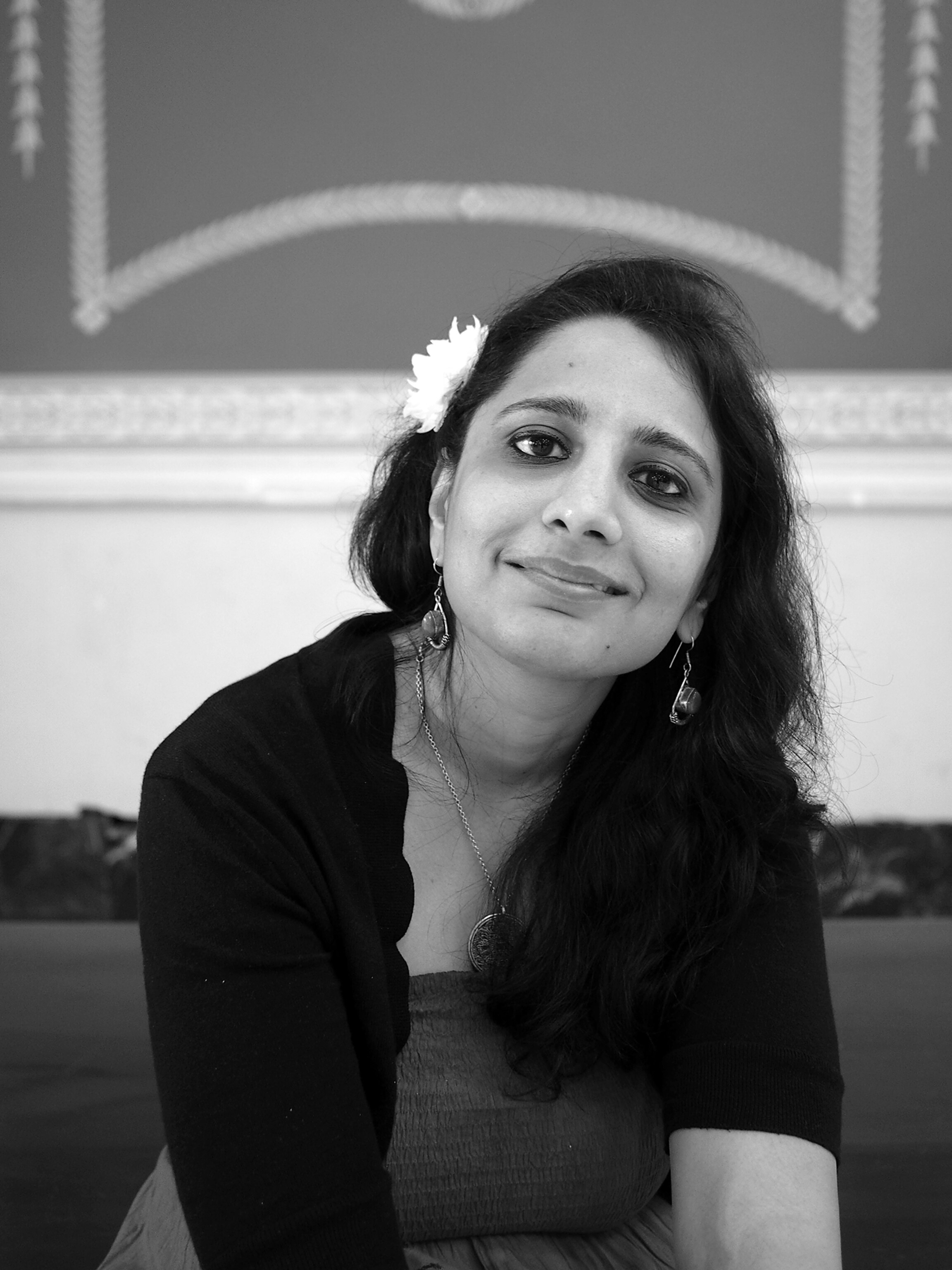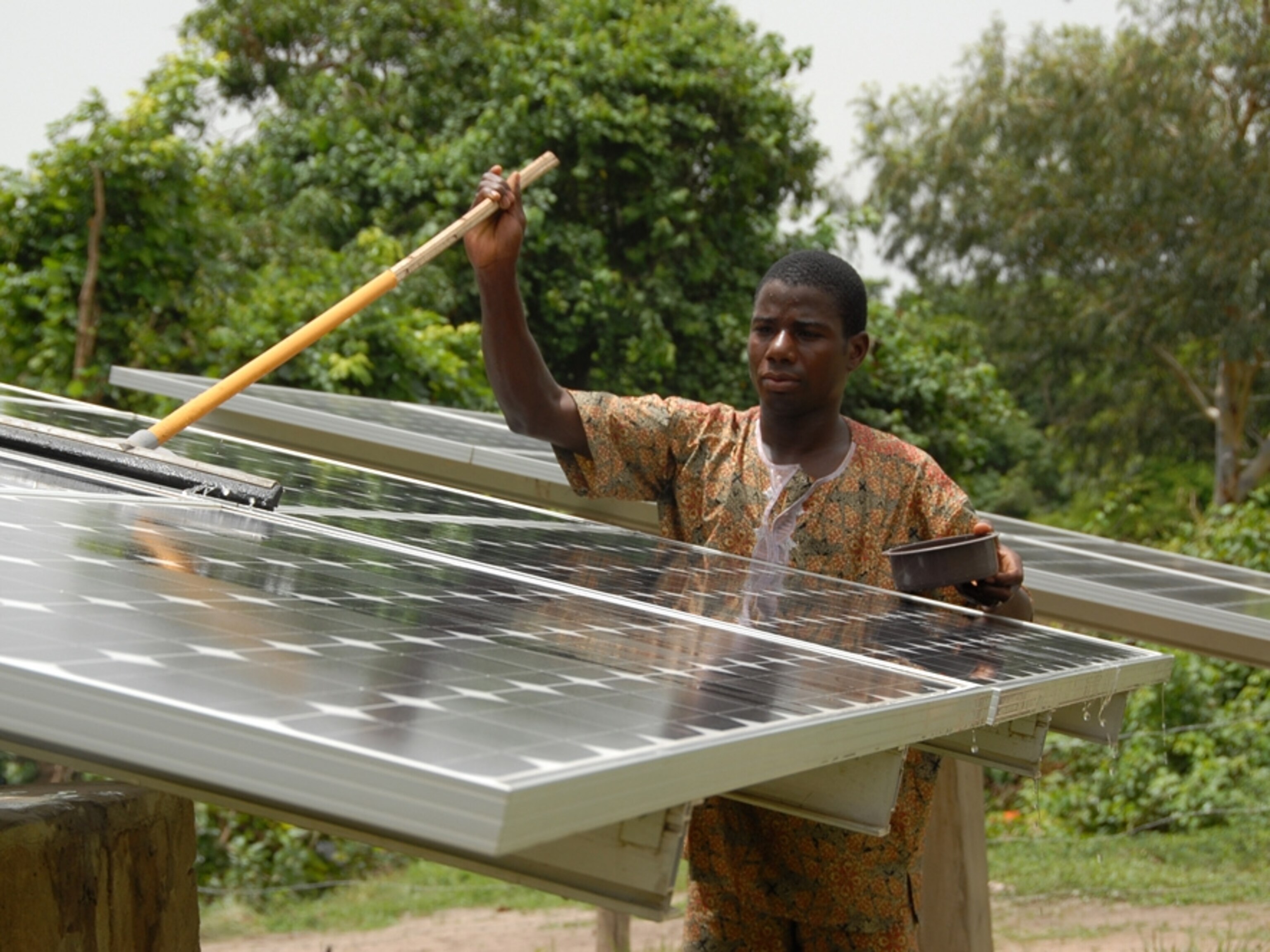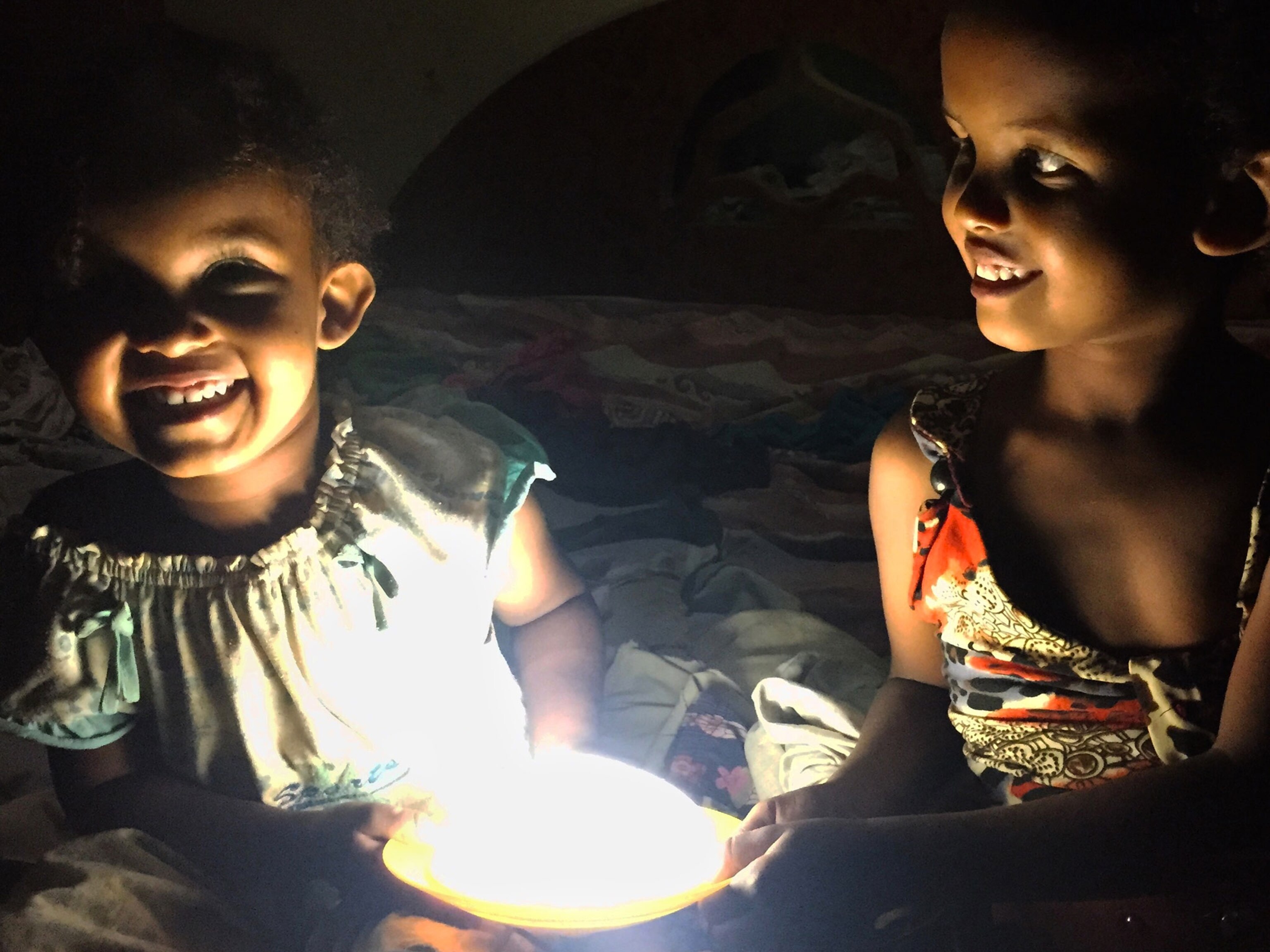
How to Bring a Sense of Poetry to the Mission for Clean Energy
Solar Sister co-founder Neha Misra explains what art and beauty have to do with helping poor women make a livelihood from solar power.
In her quest to help rural women become solar entrepreneurs, Neha Misra will climb mountains, literally.
A poet, Misra reached the summit of Tanzania's Mount Kilimanjaro this month. The climb was a fundraiser meant to highlight just how many people lack access to energy.
Together with co-founder Katherine Lucey, Misra runs Solar Sister, a Great Energy Challenge grant recipient and nonprofit organization that helps women in rural Africa light their homes with solar energy and then build a business selling that energy to others.
Here, she talks about her work helping distribute products such as solar-powered lights, phone chargers, and clean cookstoves.
If we are to truly and sustainably address energy poverty, then we believe that women and girls should be a part of the solution. What we do is curate a "business in a bag," which has a variety of products we curate based on the principle of design. Just because we are selling a product to a rural area, it doesn't mean that it should be inferior—ever. It should be the highest quality product. It should be durable and lasting so people have value for their money, and so they can have faith in solar.

Misra says Avon, with its network of women selling beauty products to each other, was an inspiration for Solar Sister.
I feel it's kind of connected [with Avon], because you can look beautiful by putting on lipstick, or you can look beautiful when you can see your face at night with a solar light. The women themselves are also users. One of the most powerful marketing tools is word-of-mouth marketing by a woman who is herself a user, and who can say: My child is not getting burned now because of this archaic Campbell's soup can kind of [lantern] used for light.
I don't care how many reports I write if they are just eating dust. I don't care how many forums I organize if it's just talk, talk, talk.
While in grad school for business economics, Misra interned at a large ad agency in New Delhi.
I was working on Pizza Hut as one of my big, big consumer research projects. With all due respect to pizza and Pizza Hut, by the end of what was a really prestigious internship at India's biggest ad agency, I was like, I don't care if people are eating pizza. I want a different kind of stimulation, and, I think, a sense of purpose.
My title is chief collaboration officer. I cooked it up because you can do that when you are in a startup. I read an article in the Harvard Business Review, "Who Should Be Your Chief Collaboration Officer?" I sent that to Katherine, and she said, "That's you!"
Misra mentions the story of Rebecca, a Ugandan woman who used a single solar light to help her chickens feed better, which in turn helped them lay more eggs that she could sell, boosting her income, allowing her to grow her farm, and eventually found a school where she teaches children how to read, write, and farm.
Really small acts—interventions—[can] have a cumulative ripple effect. We're often looking for the biggest, bombastic things. I think both are needed. We need solutions for carbon sequestration and carbon capture and increasing efficiency ... but when you go to the other side, where people do not have a single light bulb, or women are walking six hours a day to fetch fuel wood, what can we do for them so they can make that step up for the very first time to start using modern forms of energy? Energy is a means to an end, it is not an end unto itself. The goal is, what does that do for a woman?
Sometimes people ask us ... are you a woman's organization or are you a clean tech organization? I don't think they're mutually exclusive. We are a clean tech organization run by women, and we are very deliberately trying to empower women and girls across the value chain.
[Observing the 2009 Copenhagen climate change summit], I kind of had a "quarter-life crisis." To see inaction on climate change ... the injustice of it, that we can sit in a multitude of conferences and seminars, but what does that mean for somebody who has not seen the wonder of electricity?
Being an economist, I was doing my life's cost-benefit analysis as I was turning 30. I don't care how many reports I write if they are just eating dust. I don't care how many forums I organize if it's just talk, talk, talk. But really I think it's a discovery process—woman's search for meaning. To have found that meaning—I feel great things have happened to me, to be doing this work.
Solar Sister has grown from 10 entrepreneurs in Uganda in 2010 to 1,300 in Uganda, Nigeria, and Tanzania now.
With the technologies we have today, something can be done so people are not literally and figuratively in darkness. I'm also a poet in a parallel life. People say, what's the connection between Solar Sister and poetry? I tell people the connection is beauty. How do you live a life of beauty? By living with purpose.
I always tell our team that Solar Sister is poetry in motion, because we are trying to bring light, hope, and opportunity to people and how powerful that is both literally and figuratively. Poetry, or art, is an act of creating beauty, sometimes out of chaos.
Creativity is really at the heart of what we do. For social change, it takes imagination to create a future that does not exist.
The story is part of a special series that explores energy issues. For more, visit The Great Energy Challenge.
On Twitter: Follow Christina Nunez and get more environment and energy coverage at NatGeoEnergy.








